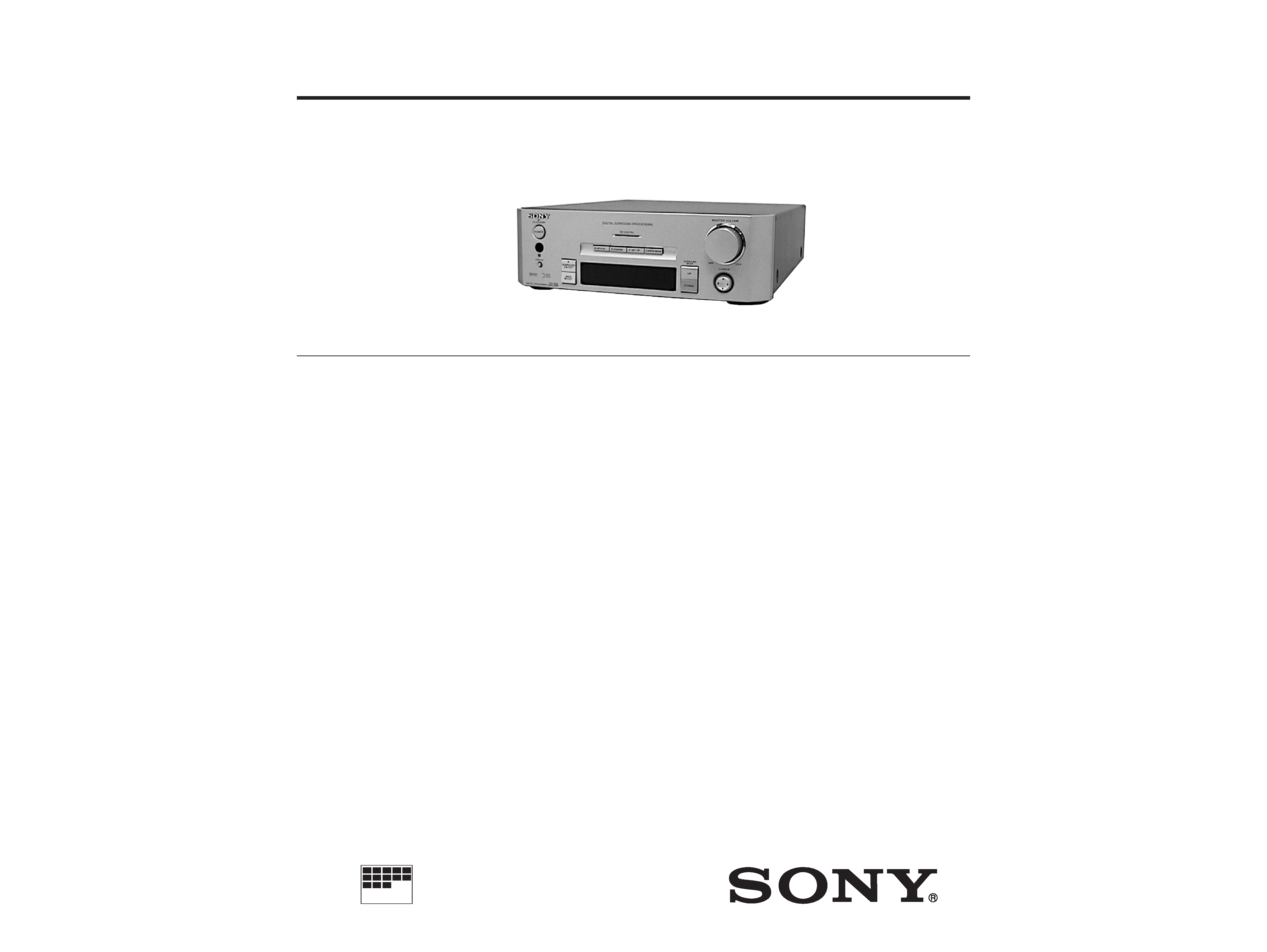
TAD-M30
E Model
Chinese Model
SERVICE MANUAL
DIGITAL PROCESSING AMPLIFIER
MICROFILM
SPECIFICATIONS
Manufactured under license from Dolby Laboratories Licensing
Corporation.
DOLBY, the double-D symbol a , AC-3, the Dolby Digital and
"PRO LOGIC" are trademarks of Dolby Laboratories Licensing
Corporation.
Digital inputs
Optical: 1
Coaxial: 1
Digital outputs
Optical: 1
Audio outputs
Front (L/R)
Woofer
Continuous RMS power output
Front/rear (switchable):50W+50W
Center: 50W
Peak music power output
1,000W
(6
at 1kHz, 10% THD)
Speaker impedance
6 to 16
Tone control
BASS: ±10 dB (center frequency 99 to 992Hz)
TREBLE: ±10 dB (center frequency 1.0 to 8.6kHz)
Power requirements
110 120V/220 240V (adjustable with the voltage
selector)
Power consumption
120W
Dimensions (w/h/d)
280
× 91 × 350mm
Mass (Approx.)
4.5kg
Supplied accessories
· Remote commander (remote) (1)
· Size AA (R6) batteries (2)
· Optical cable (1)
· Audio cord (1)
· Audio bus cord (1)
· Instruction manual (1)
Design and specifications are subject to change without notice.
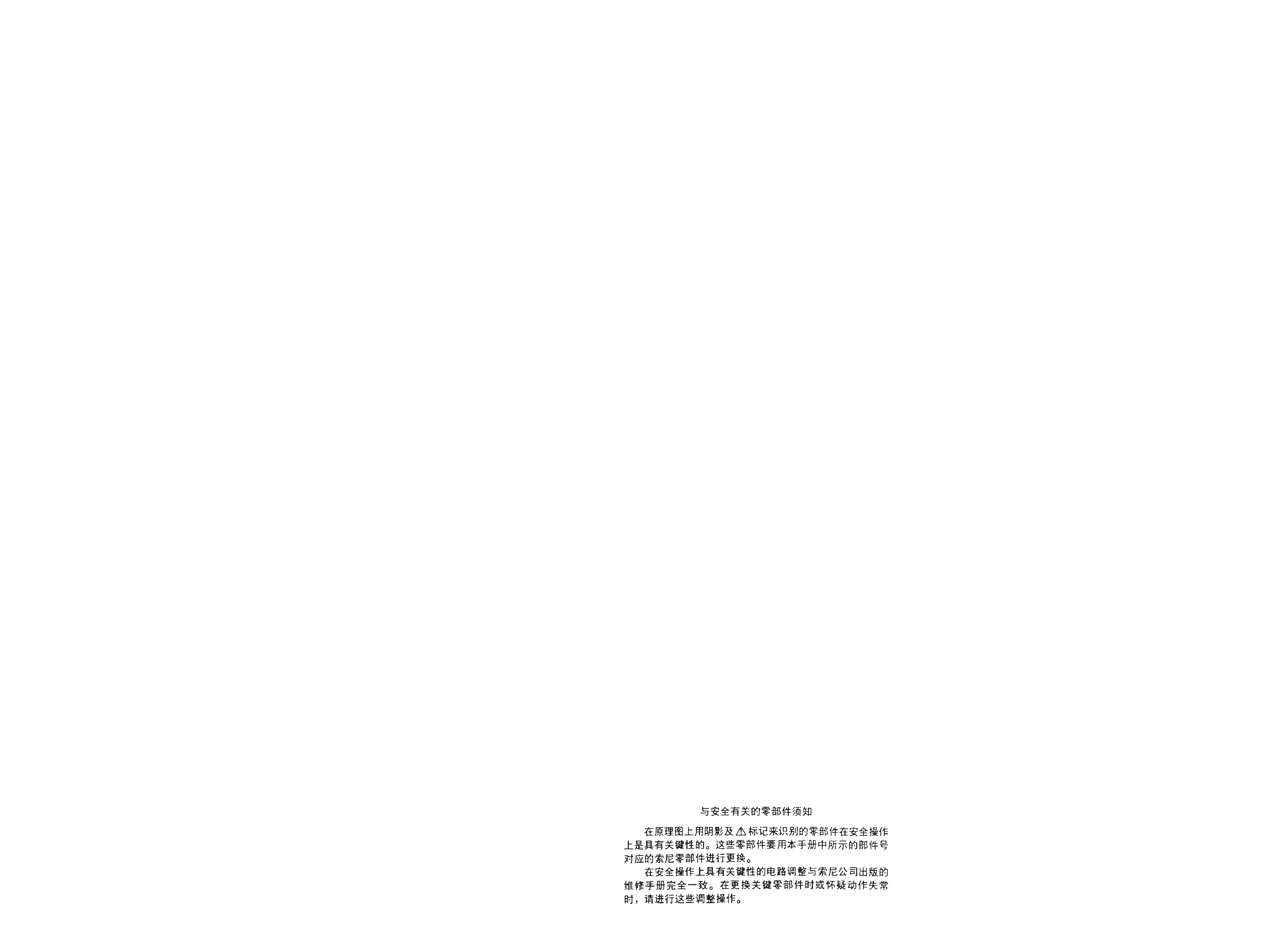
-- 2 --
SAFETY-RELATED COMPONENT WARNING!!
COMPONENTS IDENTIFIED BY MARK ! OR DOTTED LINE WITH
MARK ! ON THE SCHEMATIC DIAGRAMS AND IN THE PARTS
LIST ARE CRITICAL TO SAFE OPERATION. REPLACE THESE
COMPONENTS WITH SONY PARTS WHOSE PART NUMBERS
APPEAR AS SHOWN IN THIS MANUAL OR IN SUPPLEMENTS
PUBLISHED BY SONY.
TABLE OF CONTENTS
1. GENERAL ·········································································· 3
2. TEST MODE ······································································ 5
3. DIAGRAMS
3-1.
Circuit Boards Location ····················································· 6
3-2.
Block Diagram -- Digital Section -- ································ 7
3-3.
Block Diagram -- Main Section -- ··································· 9
3-4.
Printed Wiring Board -- Main Section (Side A) -- ········· 11
3-5.
Printed Wiring Board -- Main Section (Side B) -- ········· 13
3-6.
Schematic Diagram -- Digital Section -- ······················· 15
3-7.
Schematic Diagram -- D/A Section -- ···························· 17
3-8.
Schematic Diagram -- Power Section -- ························ 19
3-9.
Printed Wiring Board -- Power Section -- ····················· 21
3-10. Printed Wiring Board -- Panel Section -- ······················· 23
3-11. Schematic Diagram -- Panel Section -- ························· 25
3-12. IC Block Diagrams ··························································· 27
3-13. IC Pin Function Description ············································· 29
4. EXPLODED VIEWS
4-1.
Front Panel Section ·························································· 37
4-2.
Rear Panel Section ···························································· 38
5. ELECTRICAL PARTS LIST ······································· 39
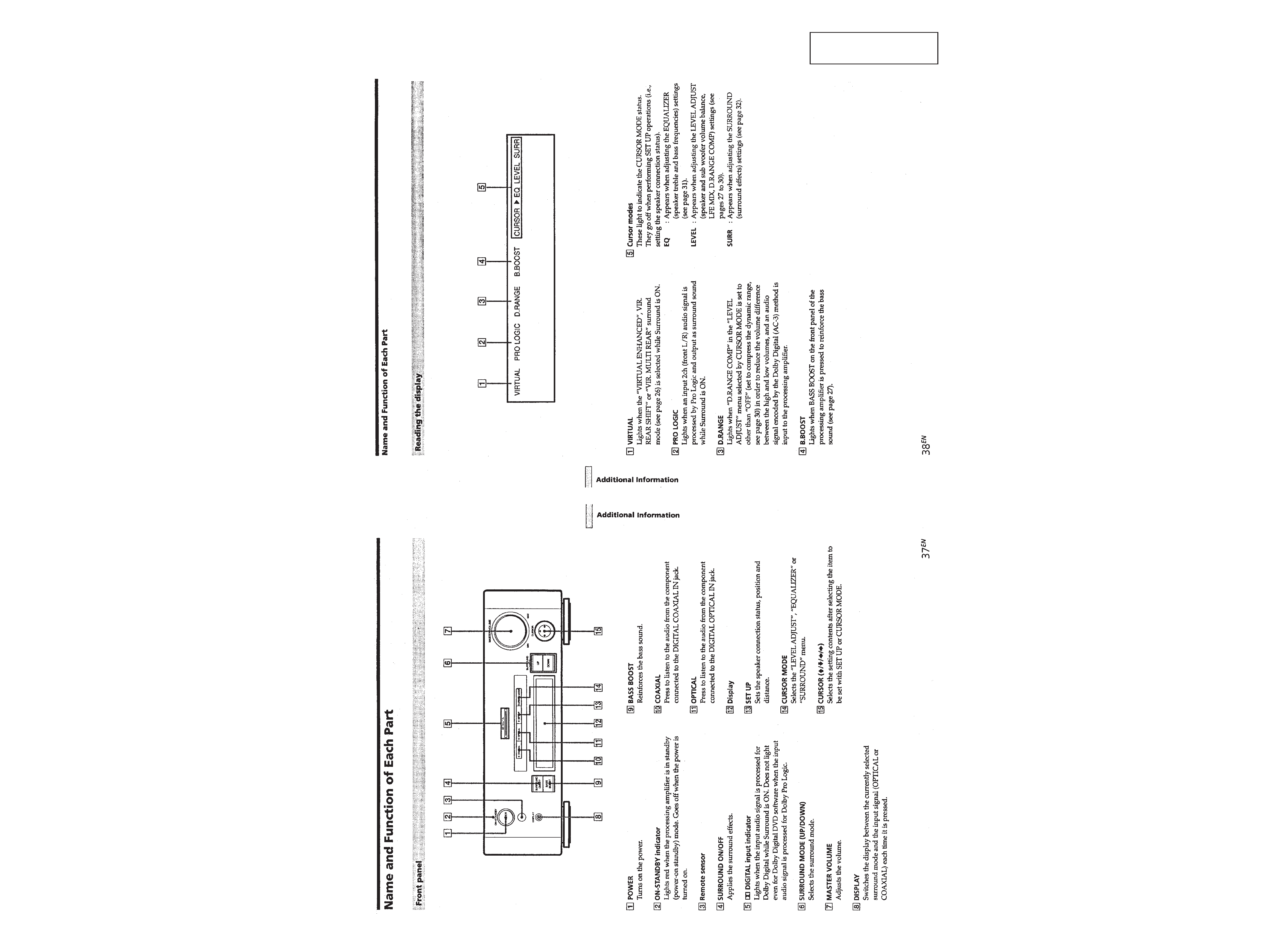
-- 3 --
SECTION 1
GENERAL
This section is extracted
from instruction manual.
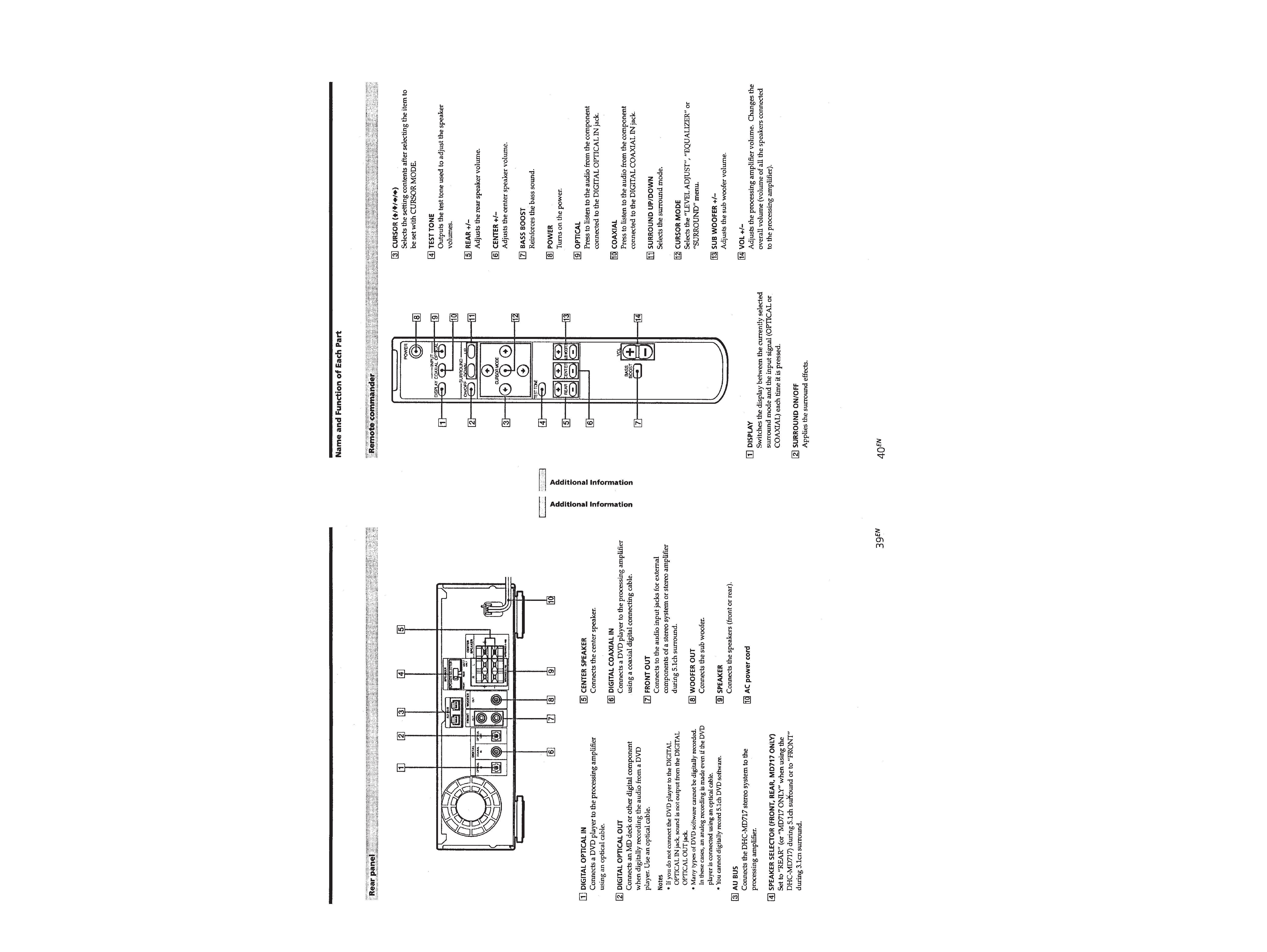
-- 4 --
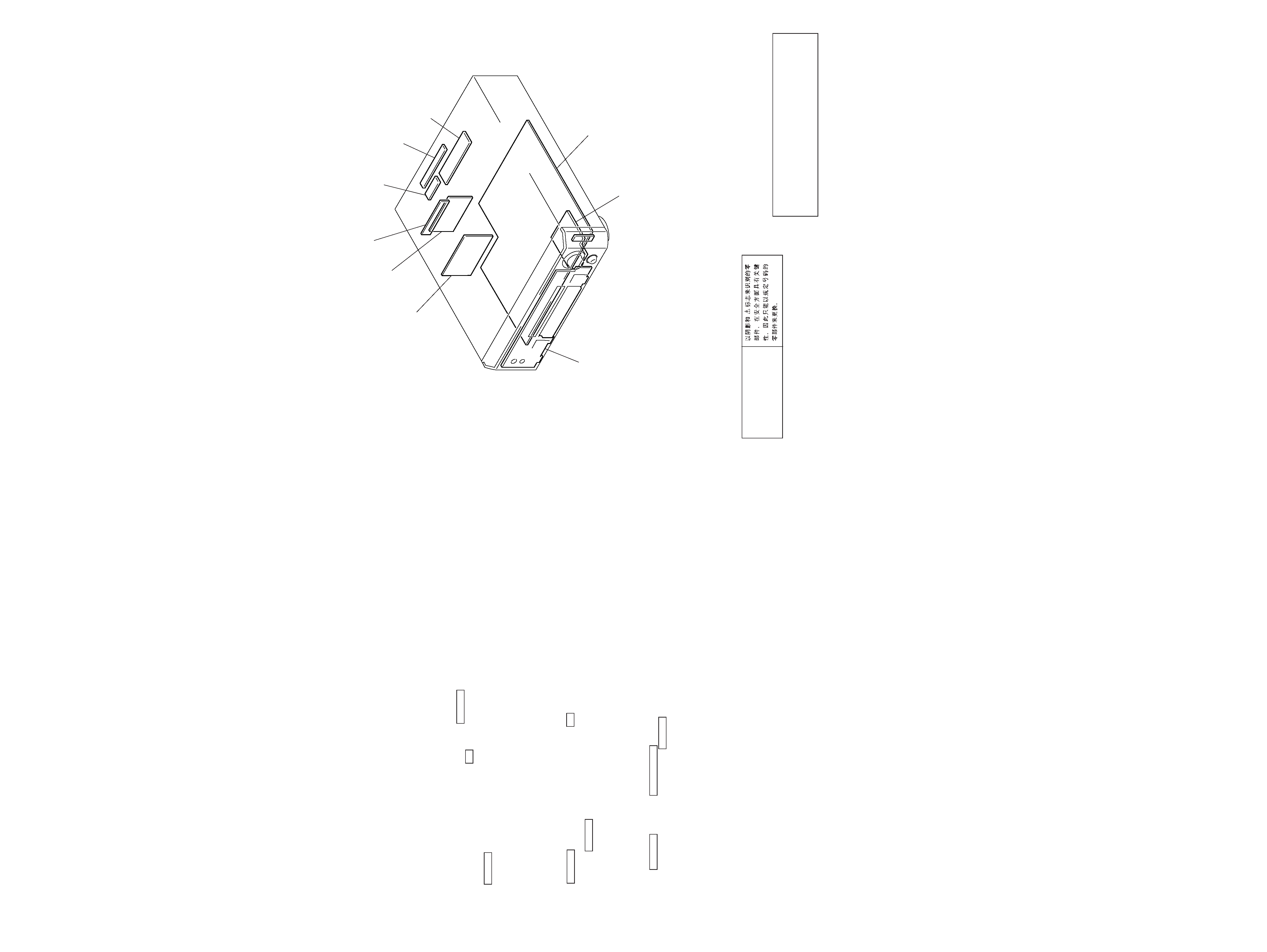
TAD-M30
-- 5 --
-- 6 --
SECTION 2
TEST MODE
SECTION 3
DIAGRAMS
3-1. CIRCUIT BOARDS LOCATION
MAIN board
VOLUME board
PANEL board
SECONDARY board
AC board
PRIMARY board
SPEAKER board
SWITCH board
JACK board
Note on Schematic Diagram:
· All capacitors are in µF unless otherwise noted. pF: µµF
50 WV or less are not indicated except for electrolytics
and tantalums.
· All resistors are in
and 1/4 W or less unless otherwise
specified.
·
%
: indicates tolerance.
·
2 : nonflammable resistor.
·
5 : fusible resistor.
·
C : panel designation.
·
U : B+ Line.
·
V : B Line.
· Voltages and waveforms are dc with respect to ground
under no-signal (detuned) conditions.
· Voltages are taken with a VOM (Input impedance 10 M
).
Voltage variations may be noted due to normal production
tolerances.
· Waveforms are taken with a oscilloscope.
Voltage variations may be noted due to normal production
tolerances.
· Circled numbers refer to waveforms.
· Signal path.
L : DIGITAL
a : ANALOG
Note on Printed Wiring Boards:
·
X : parts extracted from the component side.
·
®
: Through hole.
·
b : Pattern from the side which enables seeing.
(The other layers' patterns are not indicated.)
Caution:
Pattern face side:
Parts on the pattern face side seen from
(Conductor B)
the pattern face are indicated.
Parts face side:
Parts on the parts face side seen from
(Component A)
the parts face are indicated.
[SELF-DIAGNOSIS AND TEST MODE]
The TAD-M30 has self-diagnosis mode and test mode. The TAD-
M30 has three test modes: Factory shipment mode, Channel check
mode and FL display tube check mode. The self-diagnosis detects
DSP errors and returns them automatically, and is performed as a
part of the channel check mode. To exit the test mode, press the
POWER button again.
1. Factory Shipment Mode
When the factory shipment mode is set, the machine settings
return to the factory settings. Set this mode before returning
the repaired machine to the customer. To set this mode, first
remove theAC power cord. Then, while pressing the CURSOR
button and the left CURSOR button ? at the same time,
connect the AC power cord to the power outlet and press the
POWER button. The message "3ch SELF AMP" appears, the
machine is set to the factory shipment mode and the factory
settings are restored.
2. Channel Check Mode
When the factory shipment mode is set, the machine settings
return to the factory settings. The DSP self-diagnosis is
performed as a part of this mode. To perform this self-diagnosis,
first remove the AC power cord. Then, while pressing the
CURSOR button and the right CURSOR button / at the
same time, connect the AC power cord to the power outlet and
press the POWER button. The message "3ch SELF AMP"
appears then the self-diagnosis is performed. If the DSPs are
normal, the message "DSP NO ERROR" appears.
3. FL Display Tube Check Mode
In this mode, the FL display tubes are checked. To enter this
mode, first remove the AC power cord. Then, while pressing
the DISPLAY button and BASS BOOST at the same time,
connect the AC power cord and press the
POWER
button.
All the lamps and FL display tubes are turned on and the FL
display tube check is performed. When any CURSOR button
is pressed, the FL display tubes are turned on one after another,
then all FL display tubes are turned on again.
The components identified by
mark ! or dotted line with mark
!
are critical for safety.
Replace only with part number
specified.
